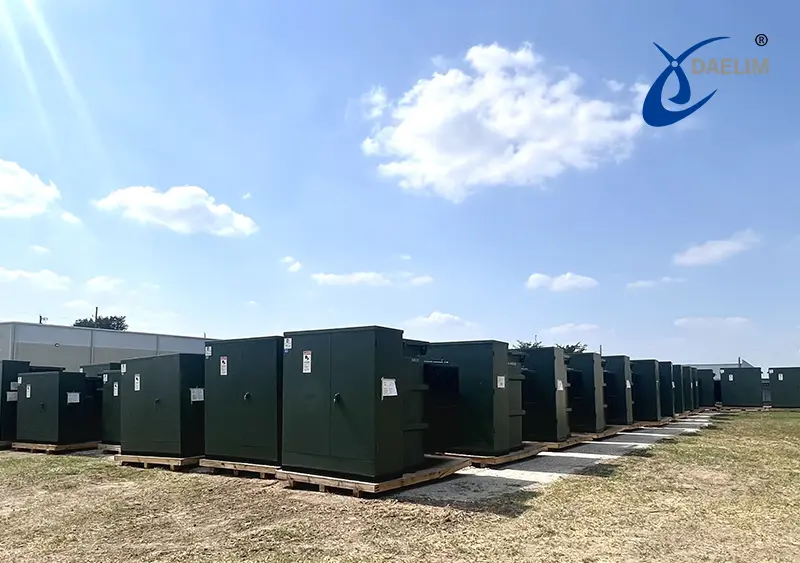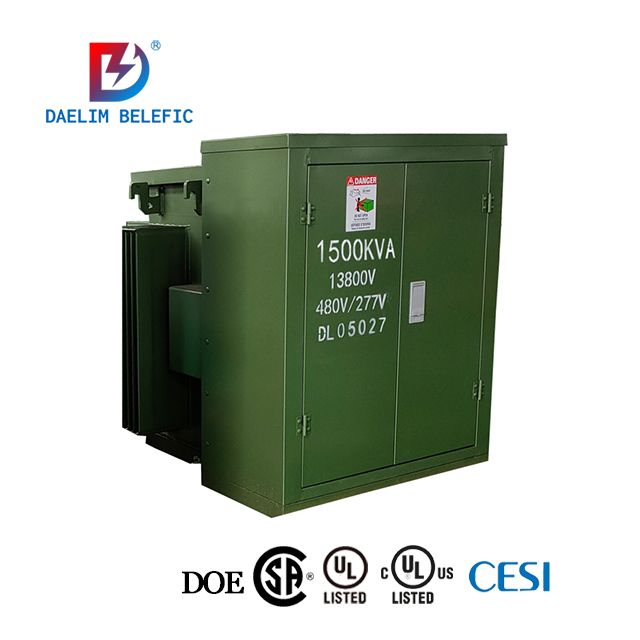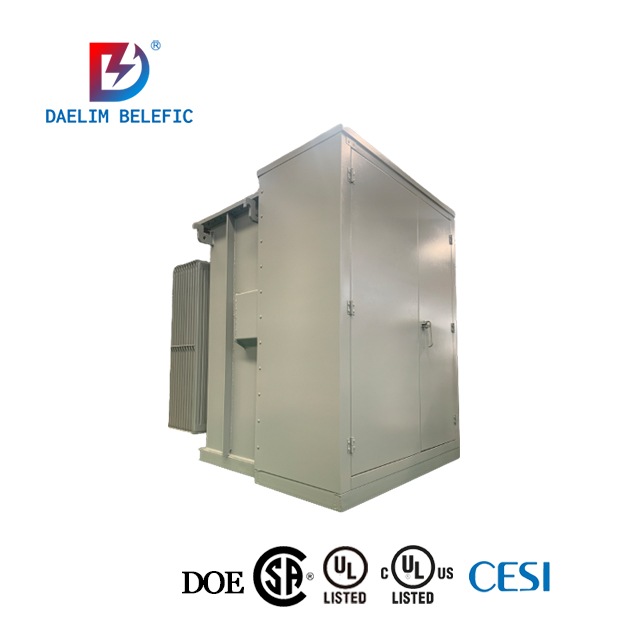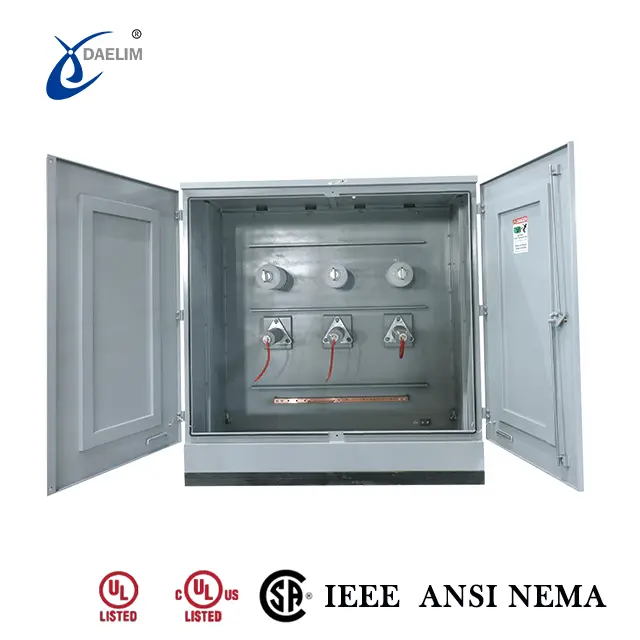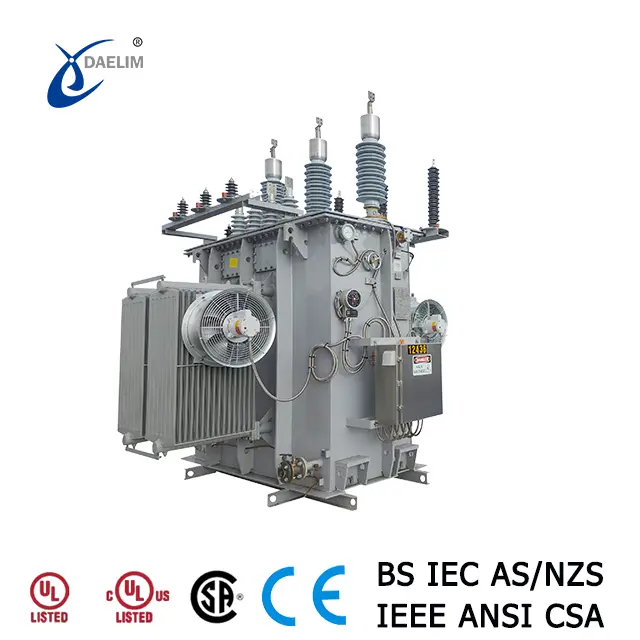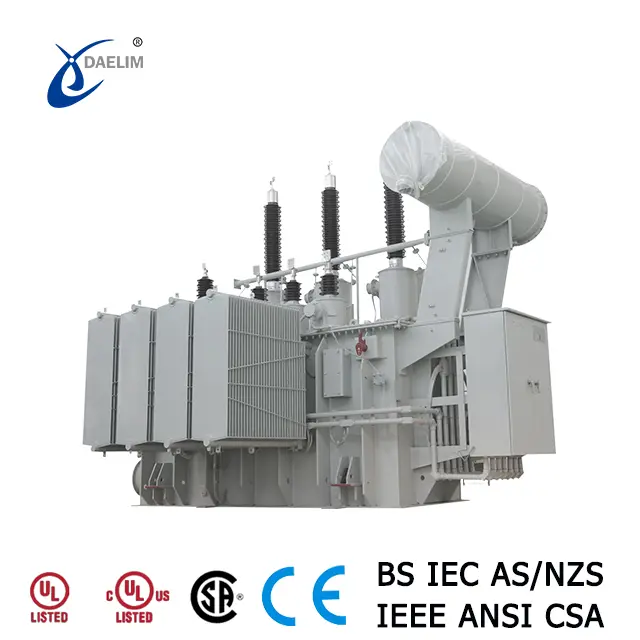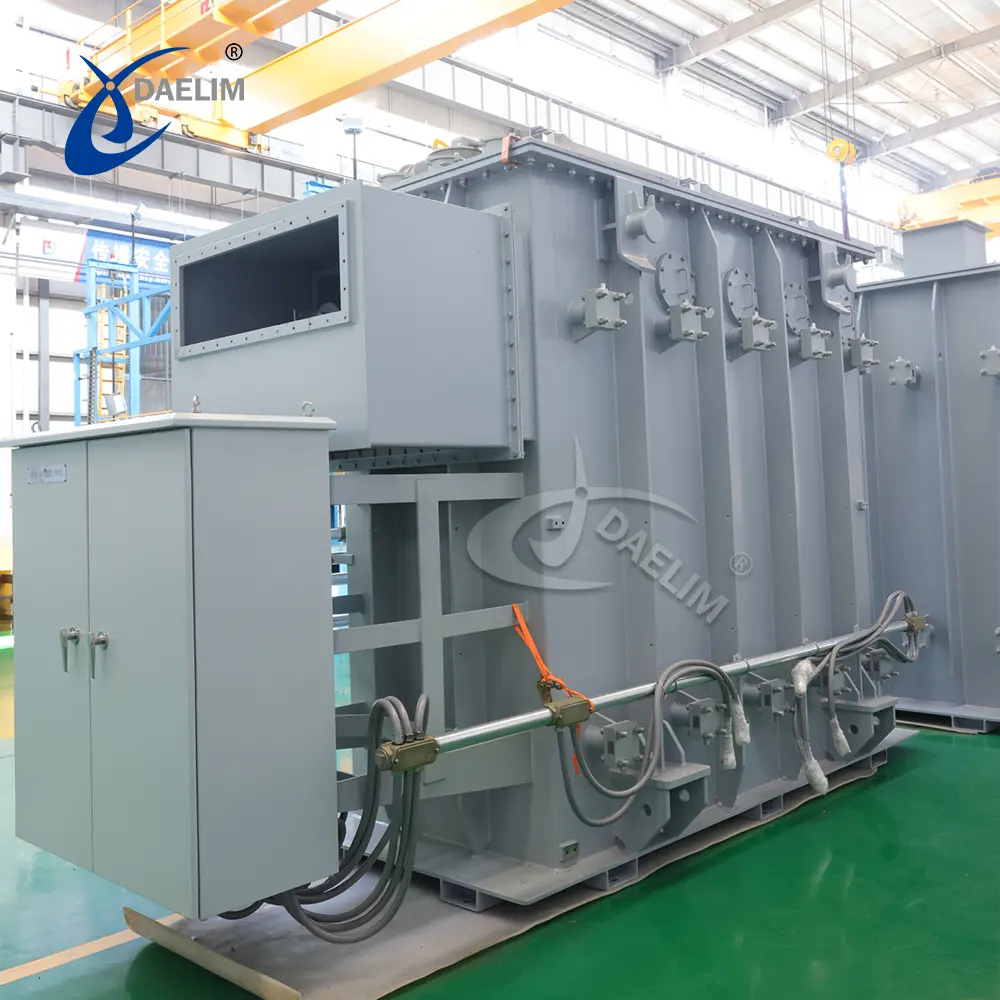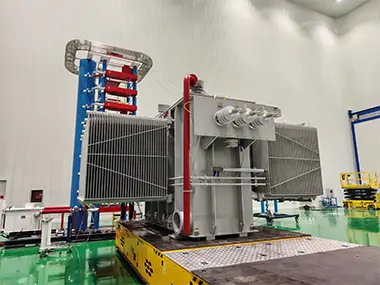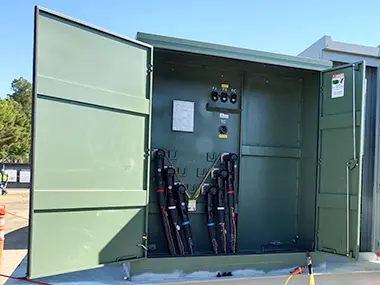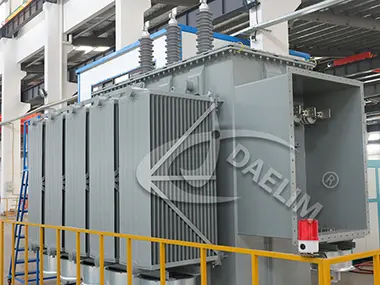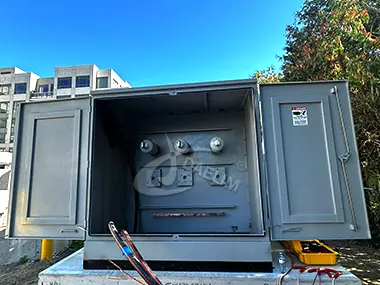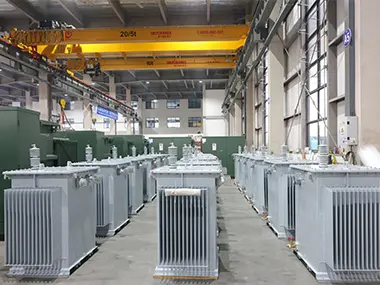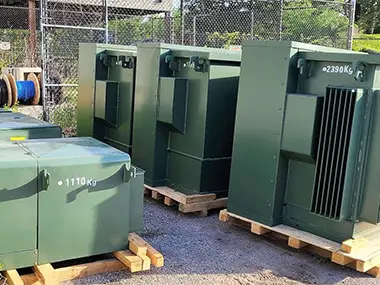All you need to know about transformer surge protection
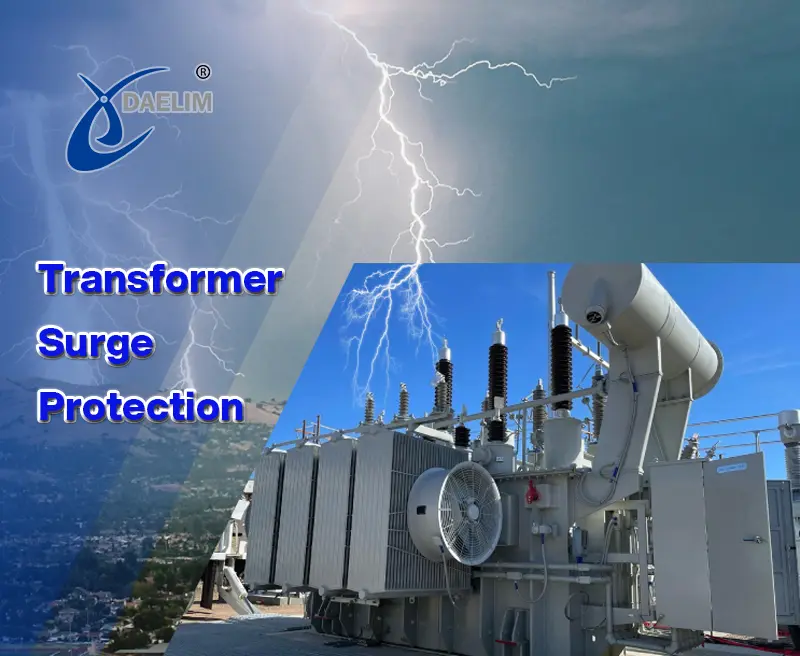
Electrical Transformers need to be safe, reliable, and highly efficient in order to deliver us electricity that is safe for our electrical devices, reliable enough for steady industrial operations, and efficient enough to deliver electricity with minimal losses.
So to make the electrical transformer safe, reliable, and efficient, there is a mechanism or a system installed on an electrical transformer called transformer surge protection. During normal operation of an electrical transformer there are certain situations like lightning strike during a thunderstorm or fault in internal switching operation that can cause a surge in electrical power. That surge in electrical power can damage several parts of an electrical transformer or can make the entire transformer blow. This is where the electrical transformer surge protection system comes into play.
Contact Daelim TransformerThis article is all about understanding the transformer surge protection system. We will understand the basics of the transformer surge protection system, how it works, what are the different parts or sensors that are used in this surge protection system and what advancements are being done in order to increase the efficiency of the system.
What Is Transformer Surge Protection?
The transformer surge protection refers to a mechanism or devices specifically designed and developed to shield the electrical transformers from any type of overvoltage or electrical power surge in the system. surge can either be external or it can be internal within the transformer or within the power system.
External Surge
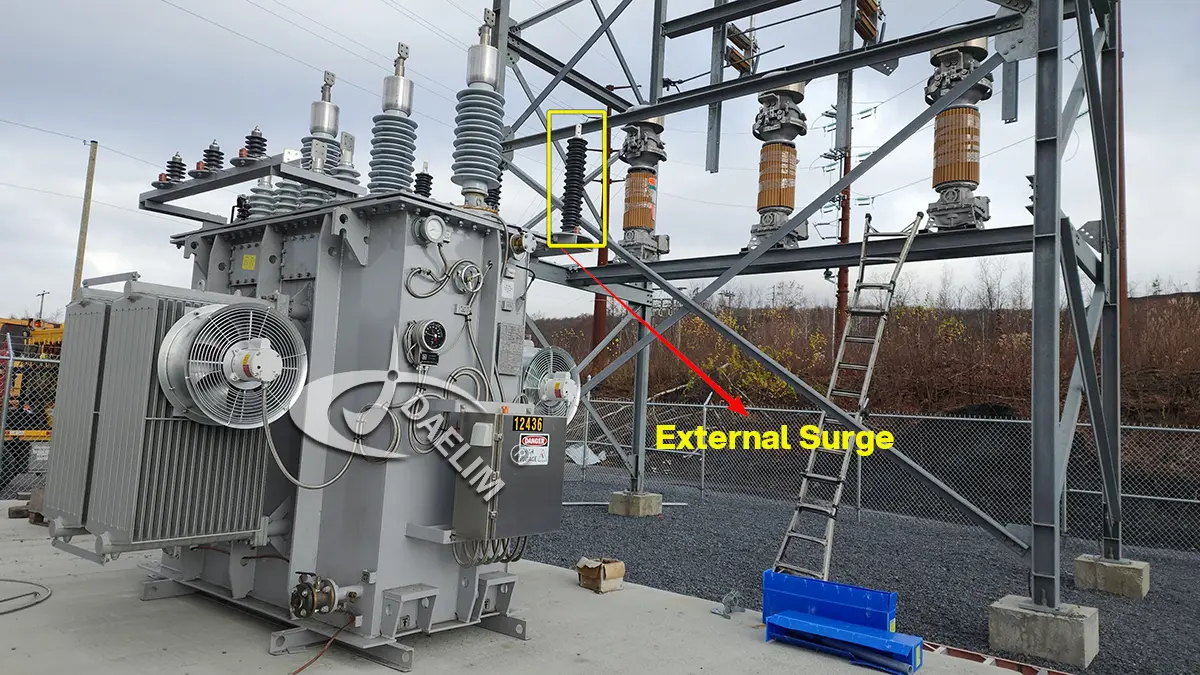 The external surge that can affect the electrical transformer parts and working can happen due to external factors like lightning strike during the thunderstorm or any fault in the external wiring of the electricity distribution system.
The external surge that can affect the electrical transformer parts and working can happen due to external factors like lightning strike during the thunderstorm or any fault in the external wiring of the electricity distribution system.
Internal Surge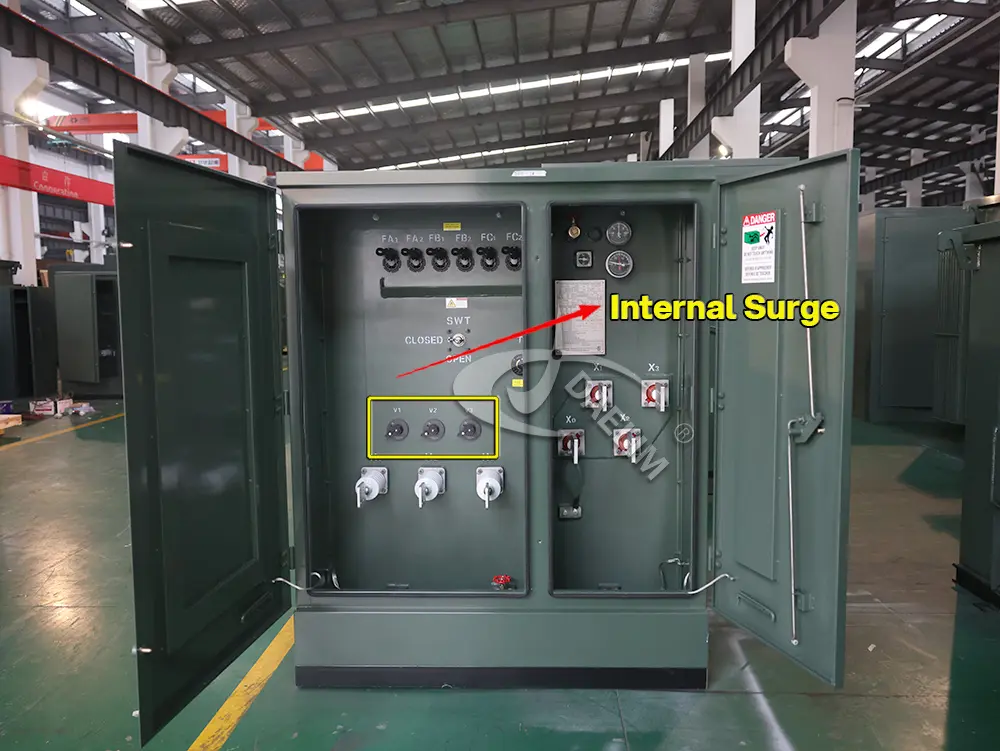
The internal surge that can affect the electrical transformer parts or working can typically be caused by the switching operations of the electrical transformer or by the capacitor bank energization or by the fault clearing in the electrical transformer.
Both types of surge in the electrical transformer or electricity distribution system cause a rapid increase in electrical voltage that is capable of punching insulations and can damage electrical transformer parts like the electrical transformer winding or core section. a surge of very high intensity can make the entire transformer fail. The surge protection system limits these voltages to within a safe level or diverts it to the ground in order to save electrical transformer parts, prevent partial or complete failure, and ensure prolonged transformer life.
You may enjoy: Transformer Overcurrent Protection
Why Surge Protection Is Critical for Transformers
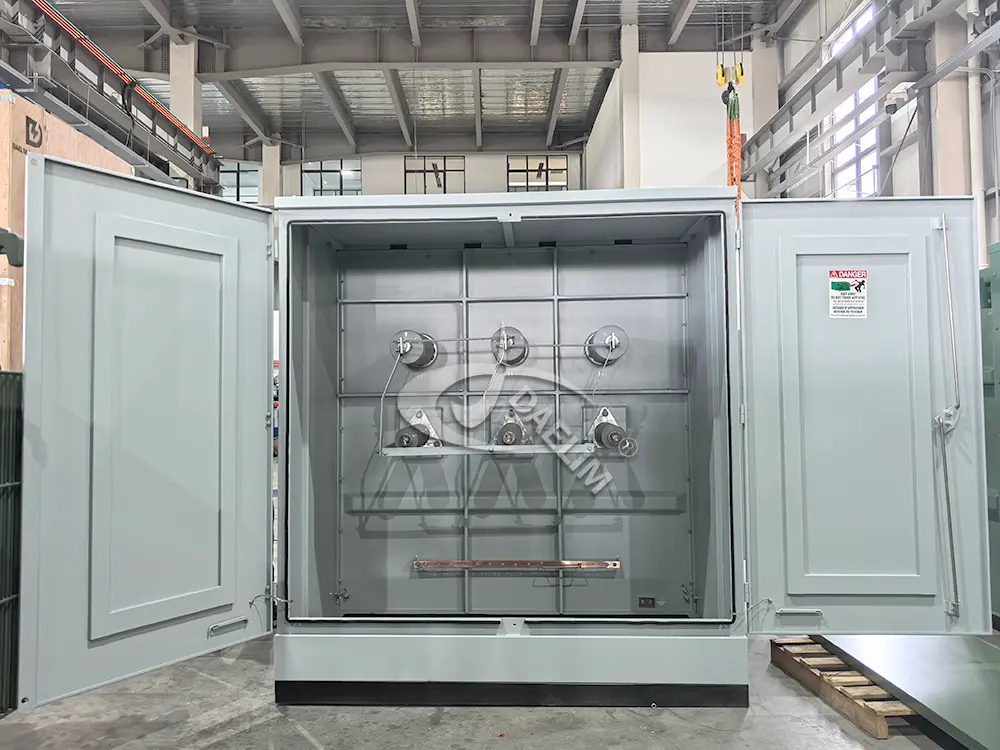 Electrical transformers are very crucial to our existing electricity distribution system and these electrical devices are also very expensive to install. So any failure of these electrical transformers will not only disturb our electricity distribution system and result in wide blackouts but will also cost the electricity distribution company hundreds of dollars in replacements and repairs. Following are the four main reasons why the electrical transformers have a surge protection system and why it is such a crucial part of the electrical transformer.
Electrical transformers are very crucial to our existing electricity distribution system and these electrical devices are also very expensive to install. So any failure of these electrical transformers will not only disturb our electricity distribution system and result in wide blackouts but will also cost the electricity distribution company hundreds of dollars in replacements and repairs. Following are the four main reasons why the electrical transformers have a surge protection system and why it is such a crucial part of the electrical transformer.
- Any type of electrical surge in a transformer will result in extra stress on the insulation system of the electrical transformer. Now depending on the level of electrical surge, the stress on the insulation system of the electrical transformer can cause damage that can result in insulation failure thus resulting in complete electrical transformer failure.
- The surge in the transformer will result in development of extra waste heat at the winding and core section of the electrical transformer. This extra waste heat can damage the winding of the electrical transformer or it can damage the connections that are made to connect winding with the input and output of the electrical transformer. A surge in the electrical transformer winding section can result in two famous phenomena called flashovers and arcing.
- Electrical surge can easily result in the blown transformer fuse or can result in complete transformer failure. Depending on the nature of the failure, the downtime of the electrical transformer during which it will be either repaired or replaced will result in loss of revenue and cost associated with the repair and maintenance or replacement of the electrical transformer. so a surge in electrical transformers can result in costly downtime. A transformer surge protection system can save this costly downtime and cost associated with the repair and maintenance.
- The transformer surge protection system is crucial to ensure the reliability of the grid system. Any blown transformer in the distribution line will result in complete stoppage of the electricity distribution system and put the reliability of the grid system under question. so such protection equipment on electrical transformers increases grid reliability.
Reading on: Transformer Protection Devices
Components of a Transformer Surge Protection System
There are several parts that combine together to develop an electrical transformer surge arrester. Each part of the transformer surge protection system plays a specific role in providing surge protection to the electrical transformer. The following is the detailed discussion on each part of the electrical transformer protection system.
Surge Arresters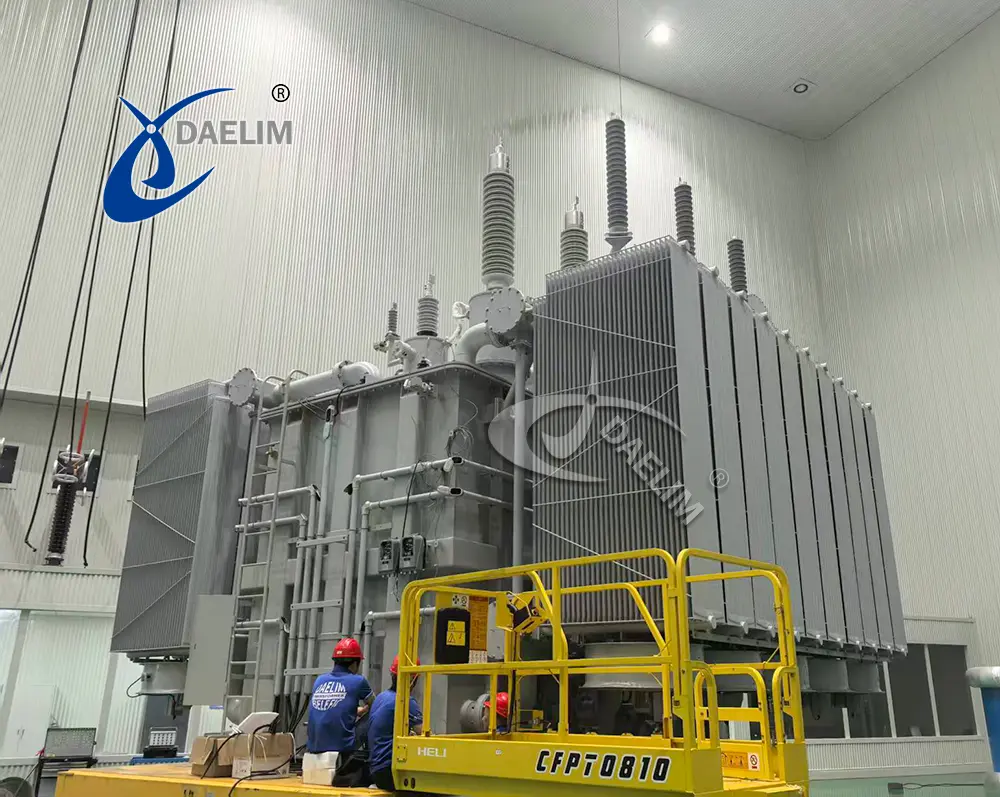
Transformer surge arrester is the core part of the transformer surge protection system and as their name implies, these are the electrical devices that limit the electrical power surge to themselves and try to limit its exposure to any part of the electrical transformer. In electrical transformers these surge arresters are typically installed at three points:
- High voltage bushing
- Transformer terminals
- Neutral grounding points
At these points surge arresters try to conduct the excess voltage to the earth through a route that does not connect to or disturb the working of any other electrical transformer part.
Learn more: Difference Between Surge Protector and Lightning Arrester in Transformers
Shielding and Grounding Systems
The transformer surge arrester in the transformer surge protection system leads to the electric transformer shielding and grounding system that helps transfer the excess voltage towards the ground. The system is designed in such a way that electrical voltage surge in any part of the electrical transformer is always directed toward the earth and not toward any part of the electrical transformer. The key components of the shielding and grounding system in the transformer surge protection system include overhead shielding wires and properly designed earthing grid.
Spark Gaps and Protective Relays
In an electrical transformer surge protection system, the spark gaps and the protective relay are the two backup systems that work to protect the electrical transformer in case the main surge protection system fails. The spark gap is a simple surge protection device that consists of two electrodes that are separated from each other by a gap filled with air. When during the electrical voltage surge the voltage exceeds the hold value, the air between the electrodes gets ionized due to the high voltage and becomes conductive.
This conductivity allows surge electrical voltage to discharge safely to the ground and thus protects the sensitive electrical transformer components. The surge voltage passes through the mechanism into the ground and as the air between the gaps de-ionizes, the conduction between the two electrodes stops and they start acting as an insulation system.
The protective relay monitors the voltage, the current, and the frequency levels in the electrical transformer. The protective relay, when it detects abnormal operating conditions such as voltage above the safe level or a short circuit in the electrical transformer wiring, initiates a protective action. Depending on the nature of the abnormality, the relay can trigger circuit breakers or it can disconnect the electrical transformer from the input or from the output electric circuit. The protective relay can also work to activate an alarm that can notify concerned technicians to solve the problem so that the transformer can be prevented from damage due to prolonged electrical stress.
Wave Traps
The wave trap system in the transformer surge protection system is also known as the line trap system and it is primarily used in power line carrier communication systems. This wave trap system is designed and developed to prevent the high-frequency communication signals from entering the electrical transformer or spreading across the network while allowing normal power frequencies to pass. In case of any emergency electrical surge event where there is a sudden increase in electrical voltage, this wave trap system helps isolate and protect the sensitive communication circuits from the high-voltage transients.
Capacitors
In an electrical transformer surge protection system, the capacitors or the capacitive components are used to filter out high-frequency voltage oscillations from the main electric supply system that might happen during electrical voltage surges. The capacitors can absorb or redirect the energy, thus reducing the voltage spike that reaches the transformer winding. In combination with resistors and inductors, these capacitors can form surge suppression networks or snubber circuits to protect insulation and sensitive equipment.
Keep reading: Protection and Maintenance Methods for Oil Transformers
Types of Transformer Surge Protection Devices
There are four different types of transformer surge protection systems available in the market that are being installed on electrical transformers.
Metal Oxide Varistor (MOV) Arresters
Metal oxide varistor arresters are very widely used in electrical transformer surge protection systems due to their fast response to a sudden surge in electrical voltage. These metal oxide varistors are also known for high energy handling capabilities. These arresters offer non-linear resistance that drastically reduces the voltage when there is a high-voltage electrical surge in the electricity distribution system or in the electrical transformer system.
Gapped Silicon Carbide Arresters
Gapped silicon carbide arresters can be considered an old system in comparison to the metal oxide varistors. These arresters use spark gaps in conjunction with the silicon carbide blocks, and these systems can still be found in legacy systems.
Hybrid Arresters
In electrical transformer applications where there is a need for layered protection systems for better protection of the sensitive electrical equipment installed with the electrical transformer, a combination of metal oxide varistor is used with the gapped silicon carbide arresters.
Surge Protection Modules (SPMs)
The surge protection modules, also called SPMs, are compact and properly designed electrical devices that are used to safeguard low- to medium-voltage transformers from any type of overvoltage caused by lightning strikes, switching operations, or faults in the power system.
One of the best features of these protection modules is that they have a modular design and they are designed with a plug-and-play feature. These devices can be very easily installed, replaced, or upgraded without requiring any major change in the existing setup. These devices are also available in a range of voltage capabilities, meaning you can select a surge protection module as per your specific requirement.
Surge Protection in Different Transformer Setups
Distribution Transformers
In distribution transformers the transformer surge protection system is installed at the primary terminals of the electrical transformer and also near the secondary bushings of the transformer. and You can find these transformer surge protection systems in almost all the residential and commercial transformers used in distribution systems.
Power Transformers in Substations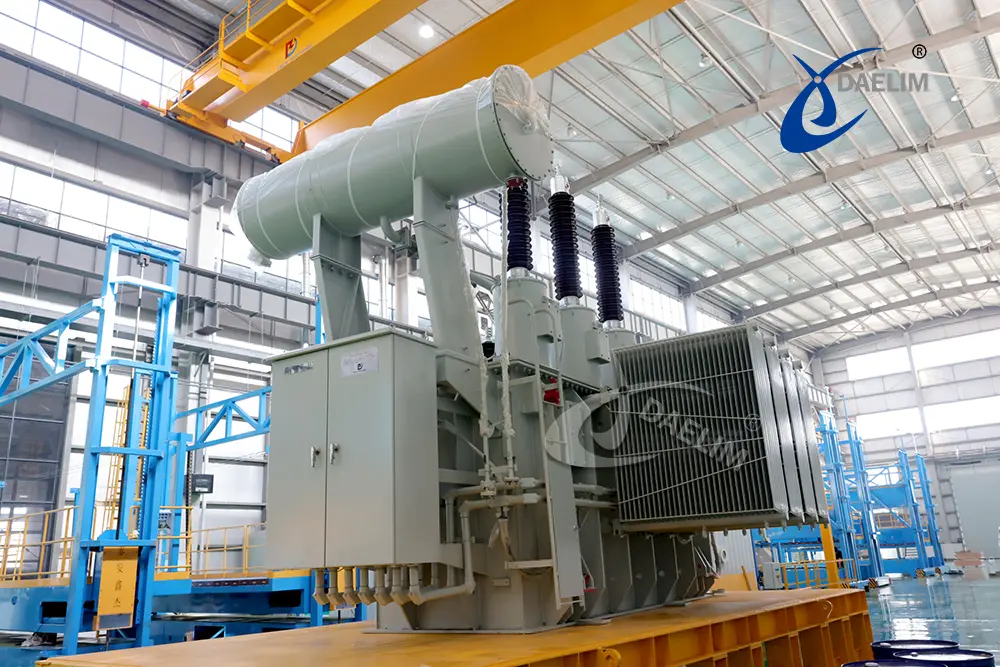
Transformers and especially large scale power transformers that are used in substation and national grid stations a high capacity transformer surge protection system is installed on both high voltage terminals and neutral connection of the large power transformer. However in all those applications where additional safety is required these transformer surge protection systems are also installed on grounding transformers so that they can have an extra layer of safety.
Pad Mounted Transformers
The pad mounted electrical transformers are always installed inside a compact enclosure and they are always installed in indoor applications so there is no chance of any lightning strike and any surge that happens here will be due to fault in the electrical system. So in such cases a transformer protection system is installed inside the sealed cabinet so that it can provide an alternate path to any surge voltage thus protecting the electrical transformer and enclosure at the same time.
Pole Mounted Transformers
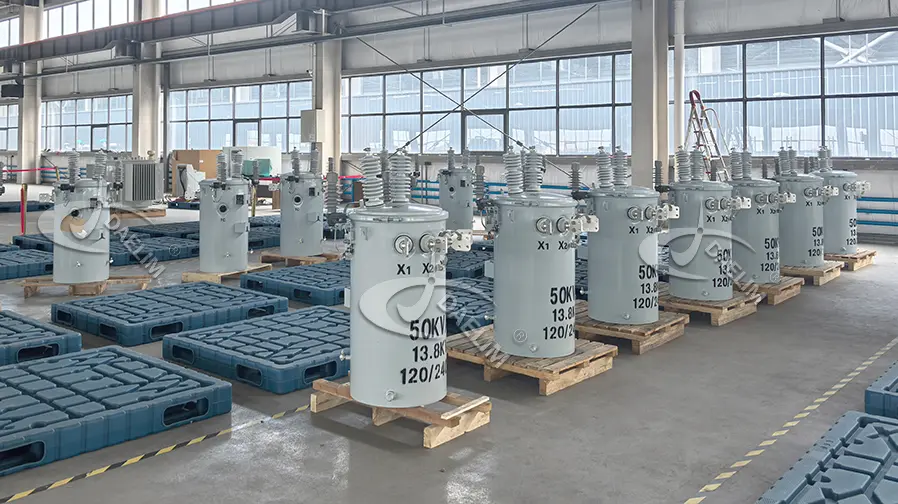
In pole mounted electrical transformer electrical surge due to lightning is the most common among any other reason of electrical surge. In such applications the electrical transformer surge protection system usually consists of lightning arrester rods and fuse cut off mounted on the poles. You can observe these types of electrical transformers and their surge protection system in all types of overhead rural and urban electricity distribution systems.
Recent Advancements in Transformer Surge Protection
As these electrical transformer surge protection systems are such a crucial part of our modern electrical transformers that no modern electrical transformer is considered complete without these safety devices. So with development in electrical transformer design and development there are some advancements in the transformer surge protection system that you might observe in near future.
The first and the most common advancement you will observe in a transformer surge protection system is the digitized monitoring of these systems that will enable us to have real time tracking data about the surge protection system health and maintenance.
And another obvious advancement in surge protection systems will be the smart arresters with IoT features. incorporating sensors and wireless communication devices into the surge protection system will help us to deliver live data on voltage internal temperature and arrester wear.
With advancement in design and development of all products, the design of the surge protection system will become compact and enable us to have a surge protection system even at the narrowest and tight spaces. Advancement in material sciences will help us to have a smaller transformer surge protection system that will be smaller yet powerful enough to control the highest ever surge in electricity due to a fault.
Keeping in view the environmental aspect of each product the transformer surge protection system will also come with UV resistance and pollution tolerance housing ensuring long service life even in harsh outdoor environments with minimal impact on the environment.
Standards and Testing
The electrical transformer surge protection system that you will install in your electrical transformer needs to comply with the international standards like that of IEEE C62 series and IEEE C57 for arrester application and transformer protection and IEC 60076-5 for insulation coordination and surge withstand requirements. The entire electrical transformer surge protection system needs to be designed, developed, operated and performed according to these international standards or any other national standards or laws governed by the local government.
As for the testing of an electrical transformer surge protection system the system needs to pass through three different tests that will ensure that the design and development of the specific surge protection system is as per requirement. These tests include a discharge voltage test in which the system’s ability to handle the electrical voltage will be tested. The tests also include an energy handling capacity test in which the amount of energy the protection system can handle is tested. The third and the last test that will be performed on the transformer surge protection system is the insulation coordination with transformer BIL.
Get it free: How to test a power transformer?
Installation and Maintenance Best Practices
There are about four specific points related to the installation and maintenance of transformer surge protection system best practices.
- First is the mounting and you need to make sure that the surge arrester of the surge protection system is installed as close to transformer terminals as possible.
- Second is about the grounding of the system. You need to make sure that there is a low resistance grounding path for the surge voltage.
- Third is the inspection of the surge protection system and you need to conduct regular visual checks and use thermal scanners for any type of hotspot on the entire surge protection system and the grounding path.
- Replacement of the worn-out parts before time, you need to make sure that you monitor the service life indicators or use digital tracking to decide timely replacements of parts that have reached their end of useful life.
Conclusion
Electrical transformers are equal parts of our electricity distribution system and we rely on them so much that we cannot bear their failure due to any type of electrical surge in the system. To overcome this, the transformer surge protection system is highly important and considered a compulsory part of modern electrical transformer systems. There are several parts in transformer surge protection systems and there are several types of systems available in the market as per your need. There are also some advancements like the introduction of digital monitoring, integration of IoT, and having a compact design for applications with space constraints. Overall, the transformer surge protection system is now part of electrical transformers and they are evolving as the electrical transformer industry and electrical transformers are evolving.
Follow Up
Modern electrical transformers cannot ensure reliability and safety of operation without the transformer surge protection system. At Daelim Transformer we offer electrical transformers of all types, sizes, power capacities, and voltage ranges with a transformer surge protection system installed as a built-in feature and we also provide specially designed transformer surge protection systems as per the client’s requirement. our systems satisfy any international standard like that of IEEE, ANSI, CSA, IEC, and any other regional or national standards of your area.
If you have any questions related to the electrical transformers or the transformer surge protection system then you can contact us and our team of experts will guide you to solve your problem.
Related Products
Related Article
Electrical Transformer Site Acceptance Testing
Site Acceptance Testing (SAT) is essential for electrical transformers to ensure safe, reliable performance after design, transport, and installation. Since transformers regulate power for sensitive equipment, any error can cause serious damage. SAT verifies proper functioning on-site through critical tests, preventing failures and ensuring compliance with operational and safety requirements.
How Do You Wire a Transformer | A Step by Step Guide
This guide explains how to wire an electrical transformer safely and reliably. It covers essential concepts, step-by-step wiring procedures, and critical safety precautions to follow before, during, and after the process. The goal is to ensure proper connections, reliable electricity delivery, and protection of both equipment and personnel.
12 MVA Transformer for Pharmaceutical Manufacturing Operations in Puerto Rico
In 2024, a pharmaceutical manufacturer in Puerto Rico required a reliable power solution to ensure continuous, safe, and efficient operations in a humid, storm-prone climate. Daelim delivered a custom 12 MVA three-phase oil-filled transformer, designed for seamless substation integration, engineered and tested to IEEE and industry standards, meeting stringent pharmaceutical production requirements.
2MVA Live Front Transformer for a Residential Community in Canada
In 2024, a new 300-resident building in Ontario required a robust power solution to withstand extreme weather and meet rising urban demands. Daelim Transformer supplied a 44 kV 2 MVA live-front transformer, designed for dense residential environments. Installed in fall 2024, it now ensures safe, reliable electricity for daily needs and essential communal systems.
Strengthening Electricity Distribution Infrastructure in Canada through 500 kVA Platform Transformers
In 2024, a Canadian utility launched a grid modernization initiative to meet rising electricity demand. Central to the project were 60 custom 500 kVA single-phase platform transformers from Daelim Transformers, enhancing distribution reliability and service quality for hundreds of thousands of residential and small commercial customers across urban, rural, and remote communities.
How Much is a Transformer
Electrical transformers are essential for safe, reliable electricity in residential, industrial, and utility systems. Buyers must understand pricing, which depends on transformer type, application, and specifications. Proper budgeting requires knowing cost-driving factors, including design, capacity, and usage requirements, to ensure the right transformer is purchased for specific industrial, utility, or infrastructure needs.

